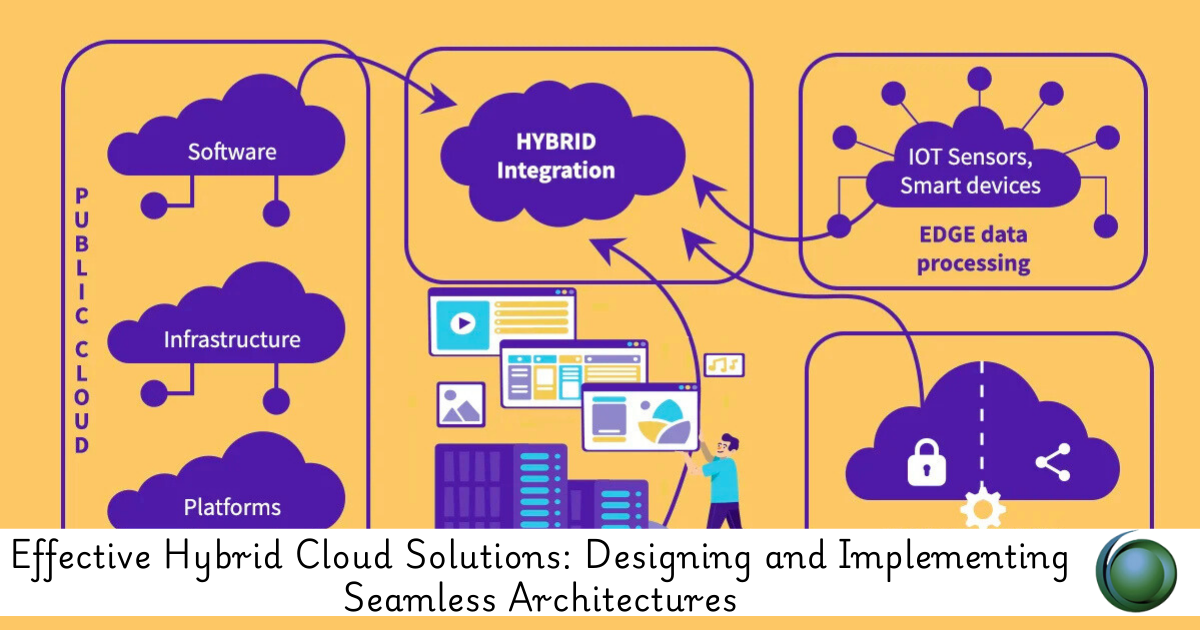Description
Introduction:
Hybrid cloud solutions offer a versatile approach to managing IT infrastructure by combining on-premises data centers with public and private cloud environments. This course is designed for IT professionals, cloud architects, and business leaders who need to understand and implement hybrid cloud strategies. Participants will learn how to integrate on-premises infrastructure with cloud services to create a cohesive IT environment that leverages the strengths of both models. The course covers architecture design, integration techniques, management, and best practices for hybrid cloud environments. By the end of the course, learners will be equipped to design and manage hybrid cloud solutions that enhance flexibility, scalability, and efficiency.
Prerequisites:
- Basic Knowledge of Cloud Computing: Understanding of cloud service models (IaaS, PaaS, SaaS) and core cloud concepts.
- Experience with On-Premises Infrastructure: Familiarity with traditional data center operations and management.
- Experience with Major Cloud Providers: Familiarity with AWS, Azure, or Google Cloud is beneficial.
- Basic Understanding of Networking and IT Infrastructure: Knowledge of networking, storage, and computing resources is advantageous.
Table of Content:
- Introduction to Hybrid Cloud Solutions
1.1. What is Hybrid Cloud Computing?
1.2. Benefits and Challenges of Hybrid Cloud Solutions
1.3. Key Use Cases and Scenarios for Hybrid Cloud
1.4. Overview of Major Cloud Providers and On-Premises Technologies - Hybrid Cloud Architecture and Design
2.1. Designing Hybrid Cloud Architectures: Principles and Best Practices
2.2. Integrating On-Premises Data Centers with Public and Private Clouds
2.3. Hybrid Cloud Models: Integration Patterns and Approaches
2.4. Managing Connectivity and Network Integration
2.5. Case Studies: Designing Effective Hybrid Cloud Architectures - Integration Techniques and Tools
3.1. Tools and Technologies for Hybrid Cloud Integration
3.2. Implementing Network Connectivity: VPNs, Direct Connect, and ExpressRoute
3.3. Data Integration and Synchronization Across Cloud and On-Premises Environments
3.4. Identity and Access Management in Hybrid Cloud
3.5. Case Studies: Integration Solutions and Tools in Hybrid Cloud Environments - Managing and Orchestrating Hybrid Cloud Environments
4.1. Hybrid Cloud Management Platforms and Tools
4.2. Orchestrating Workloads and Services Across Cloud and On-Premises
4.3. Implementing Automation and Configuration Management
4.4. Monitoring and Performance Management in Hybrid Cloud
4.5. Case Studies: Managing and Orchestrating Hybrid Cloud Solutions - Security and Compliance in Hybrid Cloud
5.1. Security Challenges and Considerations in Hybrid Cloud Environments
5.2. Implementing Security Best Practices and Controls
5.3. Managing Compliance and Regulatory Requirements
5.4. Data Protection and Privacy in Hybrid Cloud(Ref: Mastering Cloud Cost Management: Strategies and Best Practices)
5.5. Case Studies: Security and Compliance in Hybrid Cloud Architectures - Disaster Recovery and Business Continuity
6.1. Designing Disaster Recovery Plans for Hybrid Cloud Environments
6.2. Implementing Business Continuity Strategies
6.3. Backup and Restore Solutions Across Cloud and On-Premises(Ref: Harness CI-CD – Platform for Cloud and On-Premise Projects)
6.4. Testing and Validating Disaster Recovery Solutions
6.5. Case Studies: Disaster Recovery and Business Continuity in Hybrid Cloud - Cost Management and Optimization
7.1. Managing Costs in Hybrid Cloud Environments
7.2. Strategies for Cost Optimization and Resource Allocation
7.3. Using Hybrid Cloud Cost Management Tools and Techniques
7.4. Budgeting and Forecasting in Hybrid Cloud Solutions
7.5. Case Studies: Cost Management and Optimization in Hybrid Cloud - Performance Optimization and Scalability
8.1. Optimizing Performance Across Hybrid Cloud Environments
8.2. Implementing Autoscaling and Load Balancing
8.3. Strategies for Enhancing Scalability and Resource Utilization
8.4. Performance Monitoring and Tuning
8.5. Case Studies: Performance Optimization in Hybrid Cloud Architectures - Future Trends and Innovations in Hybrid Cloud
9.1. Emerging Trends and Technologies in Hybrid Cloud Computing
9.2. The Role of Artificial Intelligence and Machine Learning in Hybrid Cloud
9.3. Advances in Integration and Management Tools
9.4. Preparing for the Future of Hybrid Cloud Solutions
9.5. Case Studies: Innovations and Future Trends in Hybrid Cloud - Hands-On Labs and Exercises
10.1. Designing a Hybrid Cloud Architecture Using AWS and On-Premises Resources
10.2. Implementing Network Connectivity and Data Integration
10.3. Managing and Orchestrating Hybrid Cloud Workloads
10.4. Setting Up Disaster Recovery and Business Continuity Plans - Conclusion and Next Steps
11.1. Recap of Hybrid Cloud Concepts and Strategies
11.2. Exploring Certification Paths for Hybrid Cloud Professionals
11.3. Resources for Continued Learning and Professional Development
Conclusion:
This certification equips professionals with essential skills to effectively integrate on-premises and cloud infrastructures, enabling the development of robust hybrid cloud solutions. By mastering these competencies, candidates can enhance their organizations’ operational flexibility and efficiency.







Reviews
There are no reviews yet.